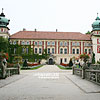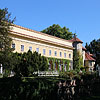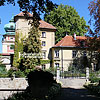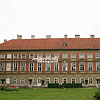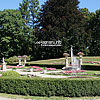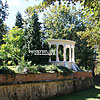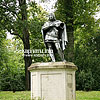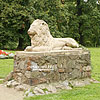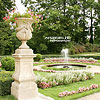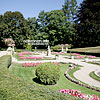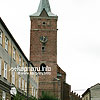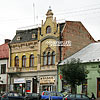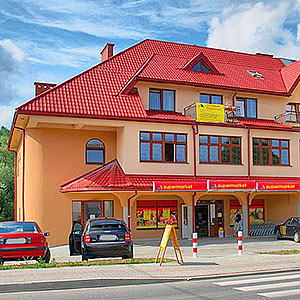Subcarpathian region
Subcarpathian region (Województwo podkarpackie) is located in southeastern Poland. It borders with Malopolska region in the west, Lublin province in the north, Ukraine in the east and Slovak Republic in the south. The territory of Subcarpathian region consists of 21 counties (districts) and 4 cities with the rights of the county. Rzeszów is the administrative centre of the region.
Relief. The south of Subcarpathian region is mostly mountainous. This is the part of the region where the most virgin nature in Poland is preserved. Outer Western Carpathian mountain ranges extend along southwestern part of Subcarpathian region. Wild peaks of Bieszczady and Low Beskids crown here in the southern part. In the central part one can admire picturesque slopes of Prszemysl, Dyniv, Stzychowski, Chenrzkowski hills and Roztocze while northern part is mainly flat. Tarnica is the highest peak of Subcarpathian region. Its height reaches 1346 m. Two biggest rivers in the region — San and Wislok — divide the territory of Subcarpathian region.
Climate. There have formed three main climate zones in Subcarpathian region:
- plain-lowland climate zone (northern part of the region within Sandomierz hollow)
- foothill climate zone (central part of the region at the foothills of the Carpathians)
- mountain climate zone (southeastern part of the region within Bieszczady and Low Beskids mountain ranges)
Climate of flat northern part of the province is characterized by long and hot summer, warm winter and relatively low precipitation. Annual amount of precipitation here is the lowest in the whole region — from 565 mm in Tarnobrzeg district to 700 mm in the plateau of Kolbuszowa. Climate conditions at the foothills of Carpathians are transitional in nature— they vary from plains to mountainous types. Annual amount of precipitation in western part of this climate zone varies from 700 to 7500 mm, in eastern — from 750 to 800 mm. Significant daily changes in air temperature and high annual precipitation (reaching 1200 mm in some districts) are characteristic for the mountainous part of Subcarpathian region.
Nature. Almost half of Subcarpathian region territory is covered with forests that are located within protected areas on the state or local levels. That is the main reason of air pollution in Subcarpathian region being one of the lowest in Poland. This therefore creates favorable conditions for recreation of people with respiratory deseases, as well as for the development of health resort tourism. Bieszczady and Magura national parks together with 10 landscape parks (South Roztocze, Cisna-Wetlina, Czarnorzeki-Strzyżów, Jaśliska, San Valley, Słonne Mountains, Pogórze Przemyskie, Janów Forests, Pasmo Brzanki and Puszcza Solska landscape parks), 16 areas with valuable landscapes and 70 nature reserves are located on the territory of the region. Over 130 km of tourist routes for hiking cover the territory of Bieszczady national park. Subcarpathian region is also rich in mineral waters. Mineral water springs of this region are pure and first class, according to Polish standards. The most favorable natural and climate conditions for health resort and rehabilitation treatment in Subcarpathian region are considered to be in the health resorts of the following balneological resorts:
- "Horyniec-Zdrój", Horyniec-Zdrój (Lubaczowski County)
- "Iwonicz-Zdrój", Iwonicz-Zdrój (Krośnieński County)
- "Polańczyk", Polańczyk (Leski County)
- "Rymanów-Zdrój", Rymanów-Zdrój (Krośnieński County)
Historical reference. Subcarpathian region was formed in 1999 after the administrative reform in Poland. Southwestern part of historico-geographical Subcarpathian province became a part of Malopolska region. After analyzing the fragments of the ancient tools which were found on the outskirts of Rzeszów, Rudna and Krzemienica, the researchers discovered that first people appeared on the territory of modern Subcarpathian region back in Mesolithic period (11000-7000 BC). According to archeological researches, first settlements in the foothills of Subcarpathian region were formed approximately 5000 years later, during Neolithic period.
Cultural and historical heritage. Many old cathedrals, secular buildings and castles are located on the territory of Subcarpathian region. Two wooden churches from Brzozowski district of Subcarpathian region have been included into UNESCO World Heritage list. The church of the Mission of All Saints was built in XV century in Blizne village, and the other was bulit on the verge of XIV and XV centuries. That is the Cathedral of Ascension of the Virgin which is located in Haczów. Besides them, more than 30 wooden cathedrals, both Greek Catholic and Orthodox, are located on the territory of the region. They were built in the period from XV to XVIII century. A big number of castles and other fortifications have been preserved on the territory of Subcarpathian region. The most famous of them are:
- Baranowo Sandomierskie castle (1591-1606), Baranowo Sandomierskie. Baranowo Sandomierskie (Tarnobrzeg County)
- Castle in Dukla (XVI century), Dukla (Krośnieński County)
- Lubomirski castle (XVI-XVII centuries, ХІХ-ХХ centuries), Rzeszów
- Zawada castle (XVI century), Zawada (Dembicki County)
- Krasiczyn castle (1580-1631), Krasiczyn (Przemyśl County)
- Kmitow castle(1507), Lesko (Lesko County)
- Bunkers of Molotov lines (1939-1941), Przemyśl; Medyka, Siedlecka, Lezyce, Krasiczyn (Przemyśl County)
- Kazimierz castle (XI century, 1340), Przemyśl (Przemyśl County)
- Fortress Przemyśl (XIX-ХХ centuries), Przemyśl (Przemyśl County)
- Sanok Royal Castle (XIV-XV centuries), Sanok (Sanocki County)
- Fortification remnants (1664-1680), Sieniawa (Przeworski County)
- Tarnowski castle (XV century), Tarnobrzeg (Tarnobrzeg County)
 Ski lifts and ski resorts of Subcarpathian region:
Ski lifts and ski resorts of Subcarpathian region:
Ski resorts and ski lifts of Subcarpathian region provide a wide variety of services related to winter recreation in Polish Carpathians. The diversity of ski resorts will satisfy the needs of both starting skiers and experienced sportsmen.
 Useful links:
Useful links:

 Ukraine
Ukraine Poland
Poland Slovakia
Slovakia
 Українською
Українською